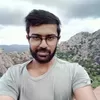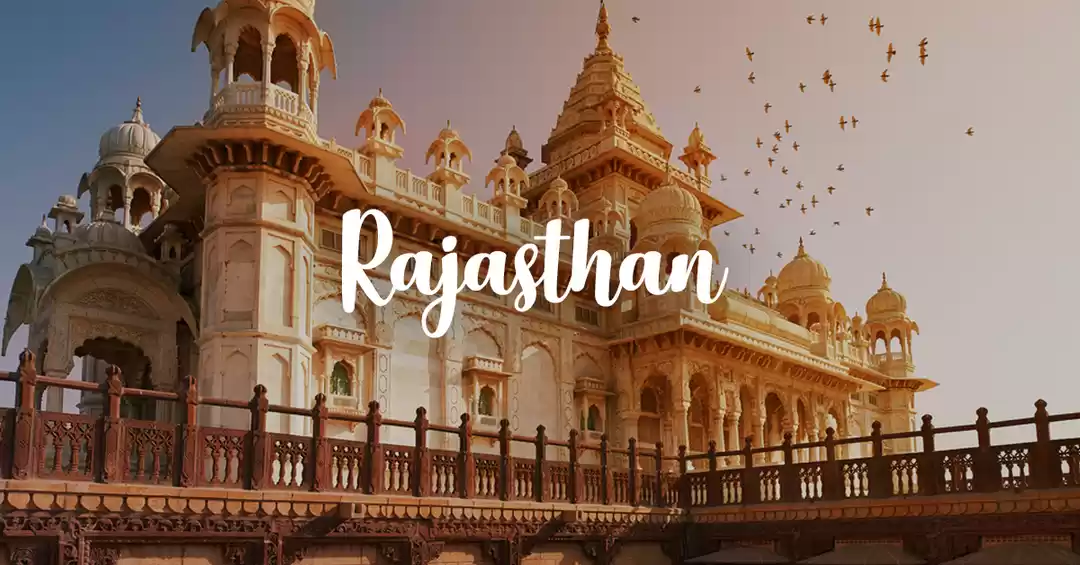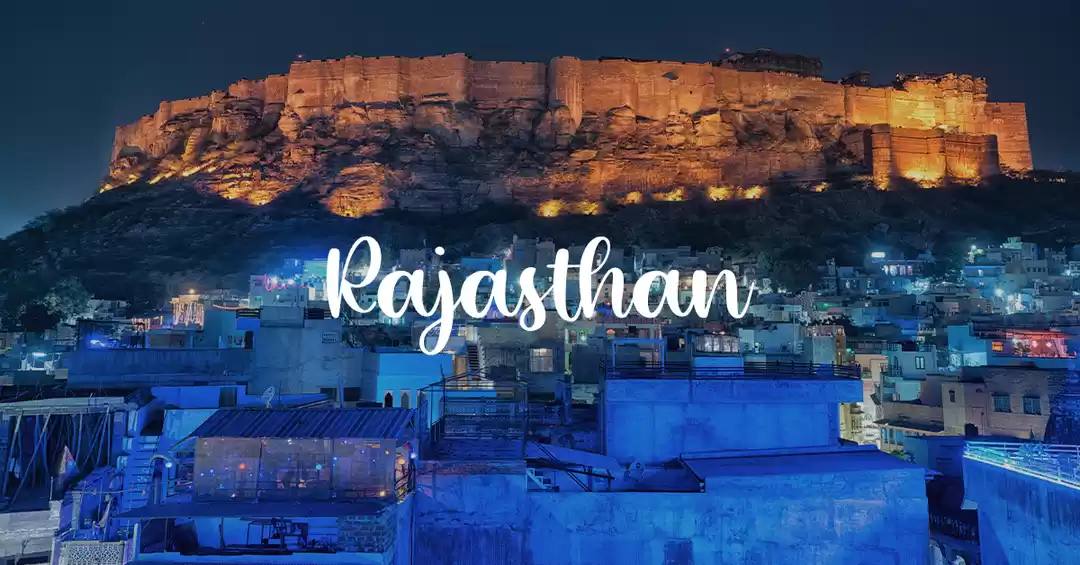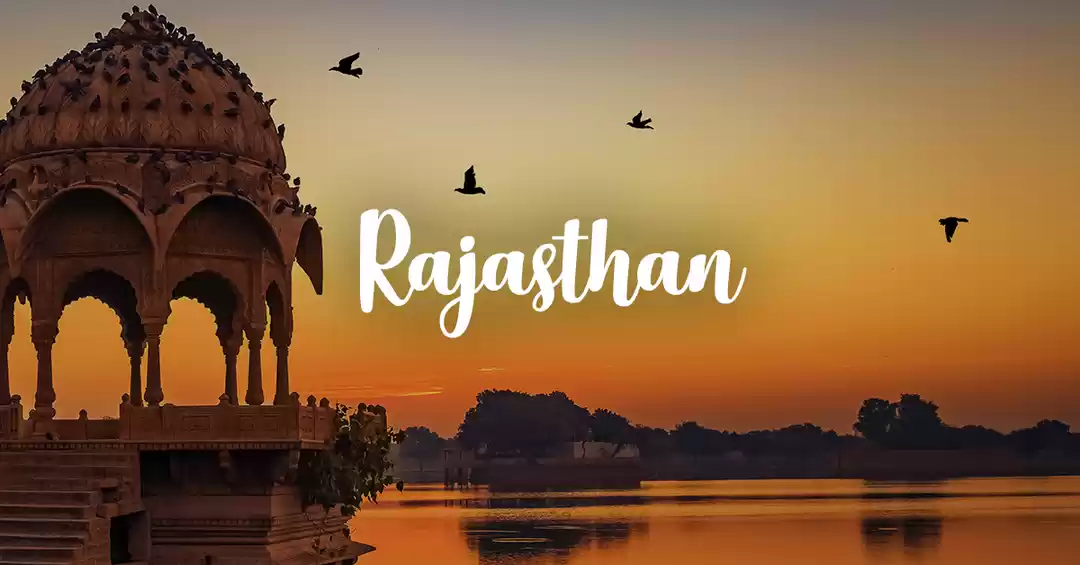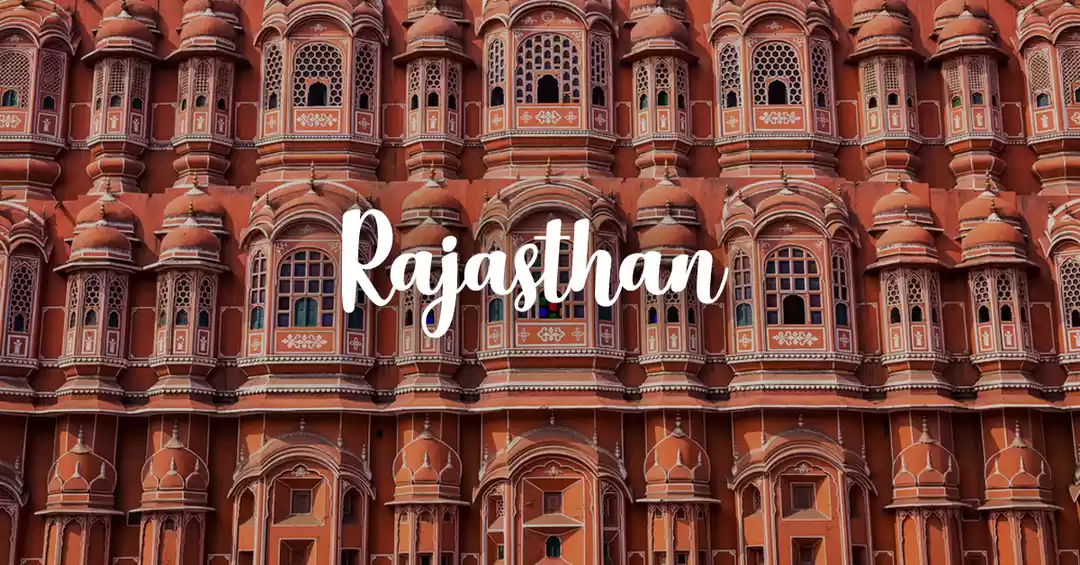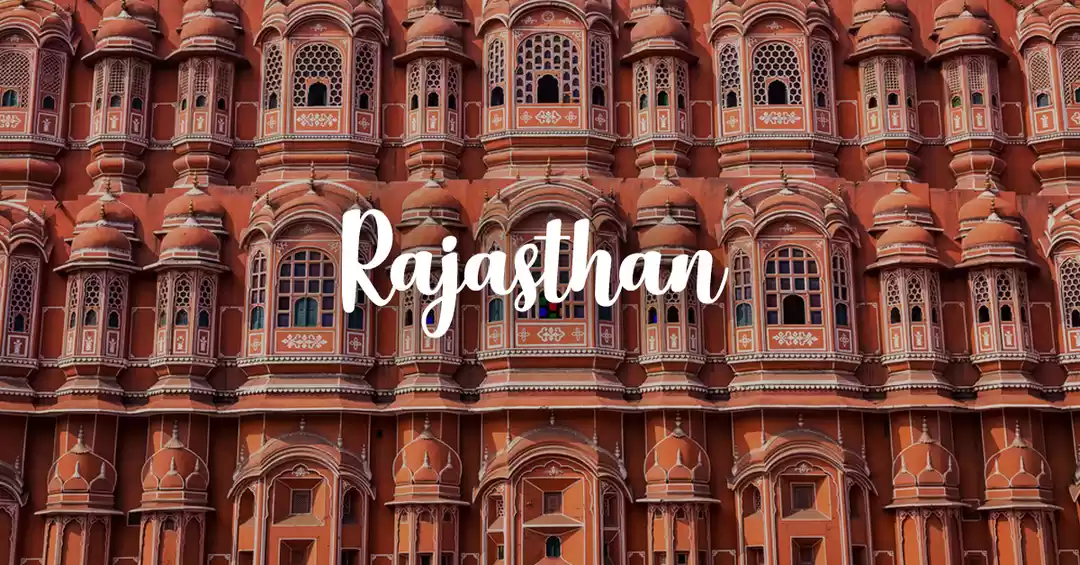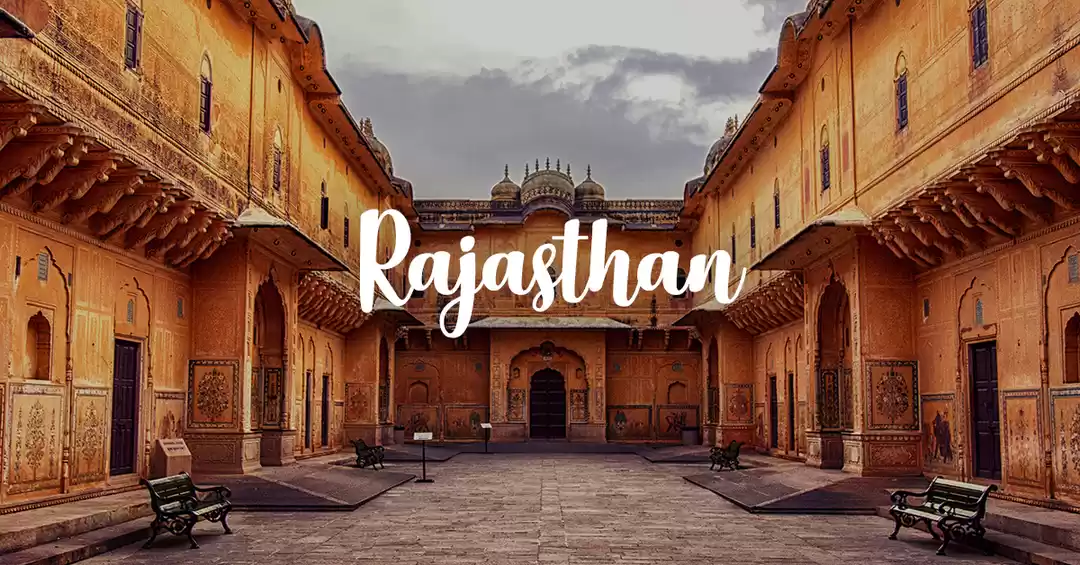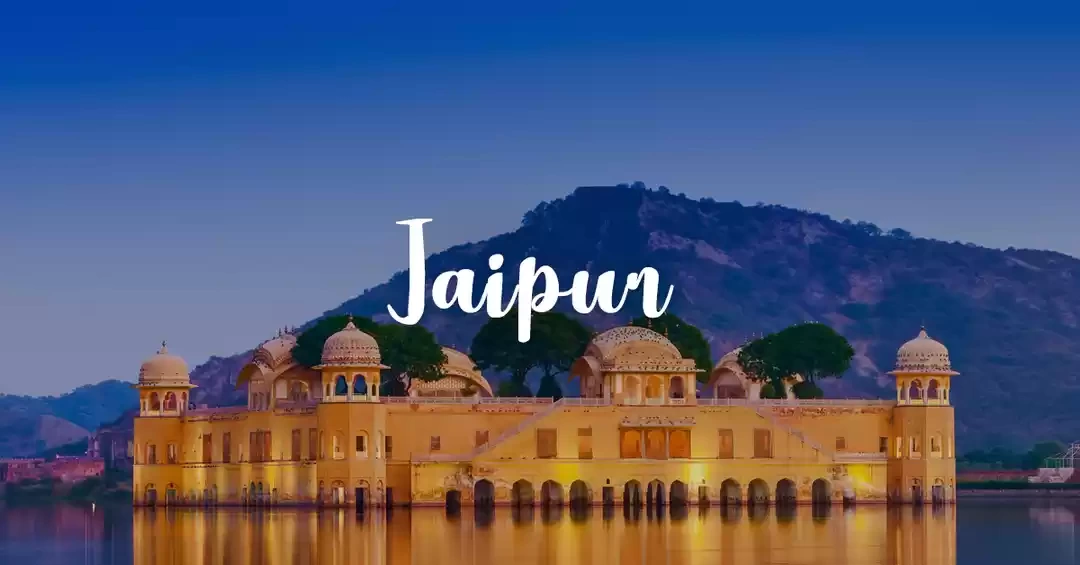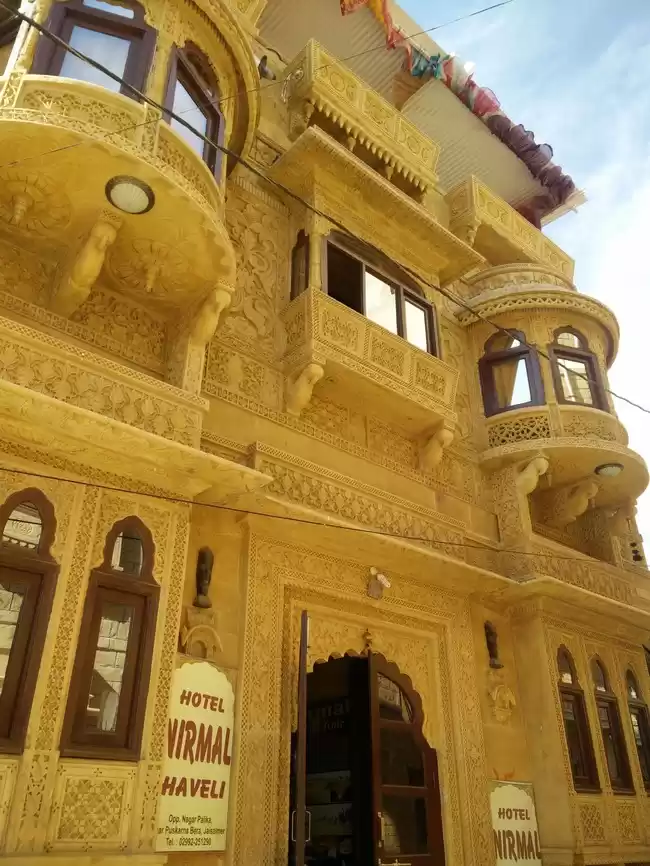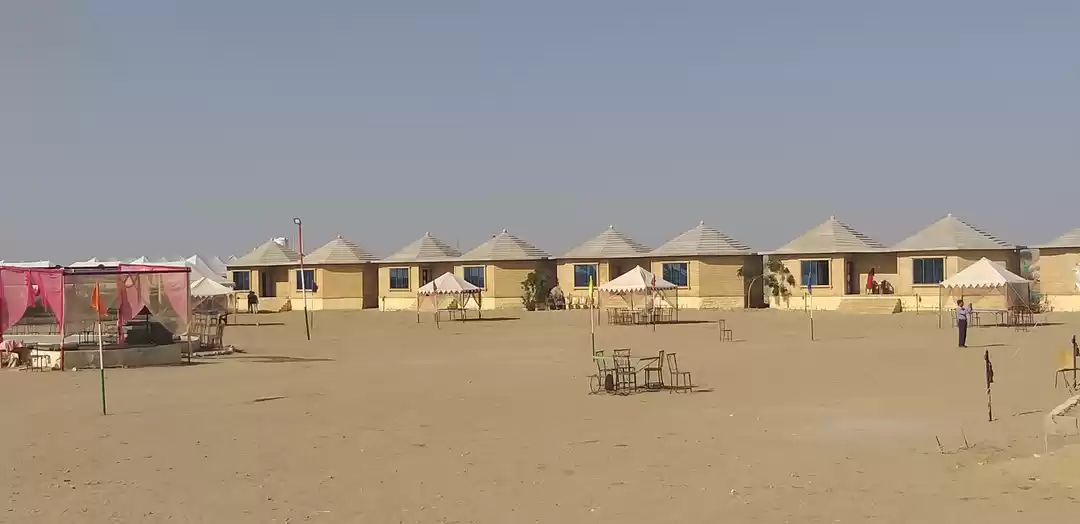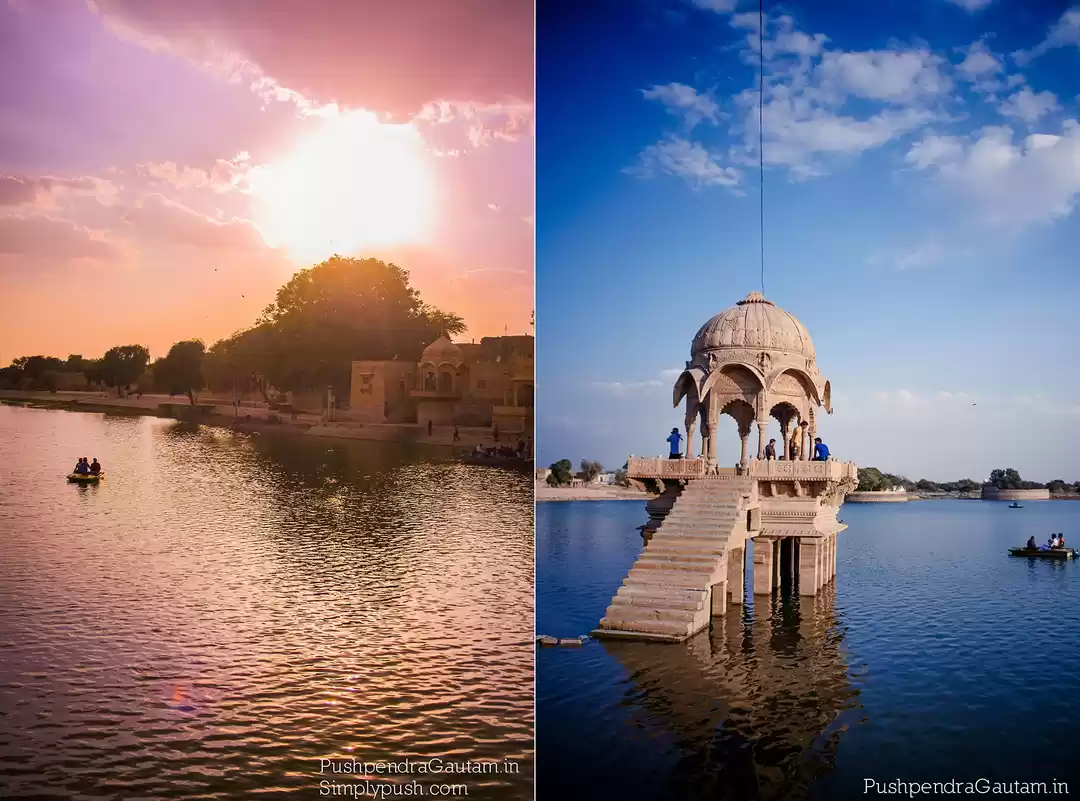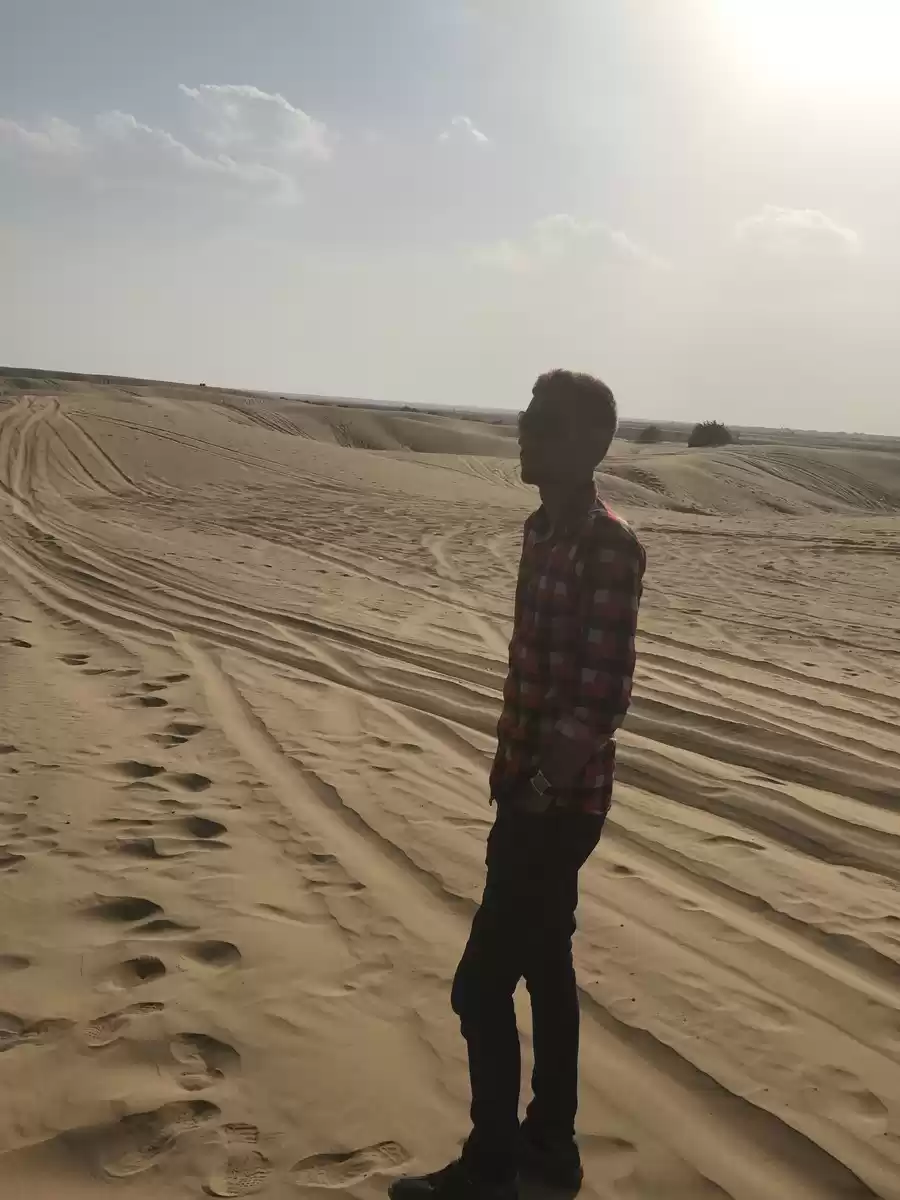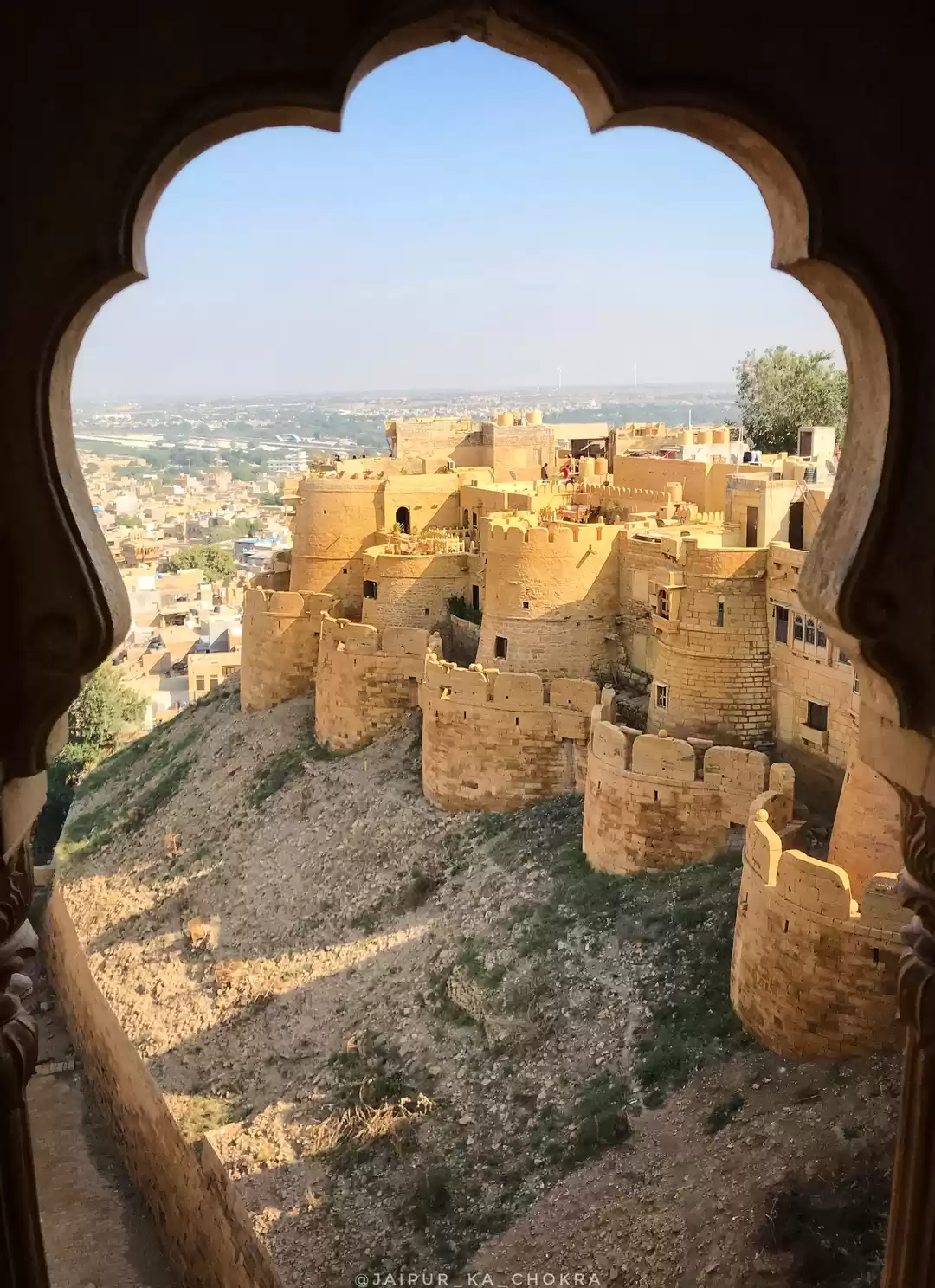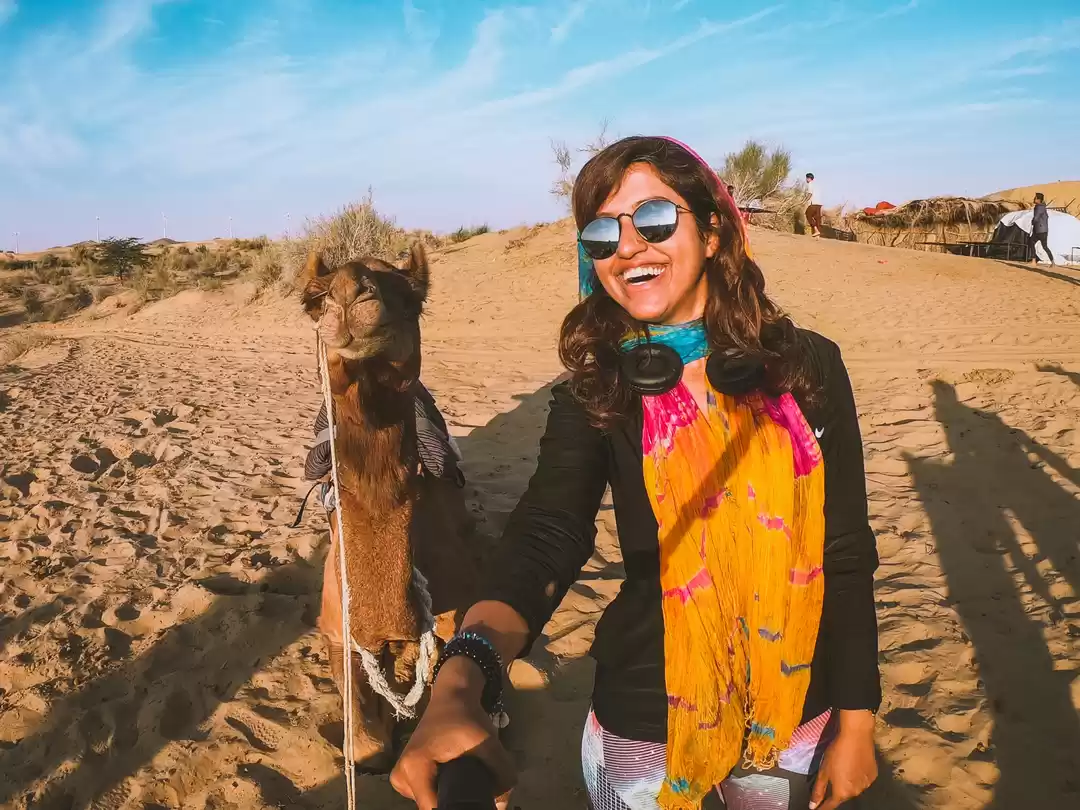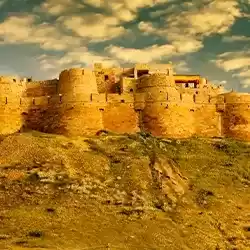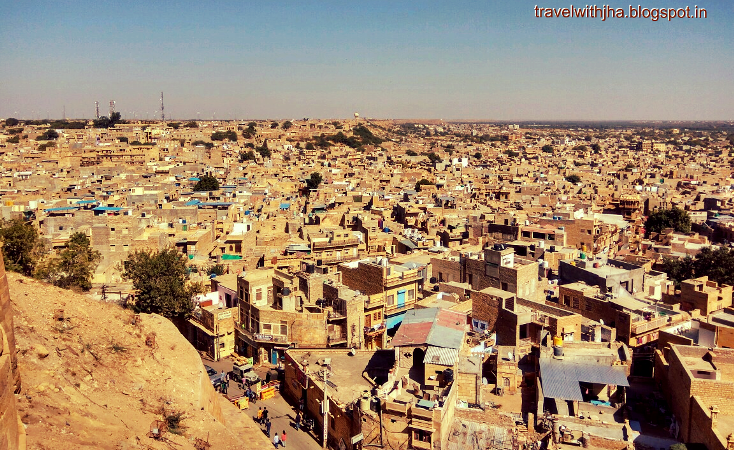Back to the Golden city
On the way back to the city, I visited the infamous, haunted village of Kuldhara, which is a 5km detour on the road between Jaisalmer and Sam. The village has a desolated look and had a cursed feel about it. Even the narrow stretch of road that leads to it has a scant human existence. The village was abandoned about 200 years ago.
Kuldhara was home to the Paliwal Brahmins who had migrated from the Pali region of western India, with its first structures built sometime in the 13th century. Kuldhara as opposed to common belief isn’t a single village but was actually composed of 84 villages. Then, one night in 1825, the village’s inhabitants simply disappeared, taking with them only what they could. Why would a prosperous community abandon their home and just vanish overnight? There are a couple of stories that have circulated, however it’s not certain what the truth is.
‘One theory suggests that the ever dwindling water supply forced the inhabitants to seek new pastures, which still wouldn’t explain the overnight vanishing act.
Another suggests the villagers fled to escape the oppression from the ruthless local ruler, the Diwan of Jaisalmer, Salim Singh. The Diwan used to collect heavy taxes from the villagers. Later he set his sights on the daughter of a local chief and demanded her hand in marriage. He threatened the villagers with even higher taxes should anyone come in his way and gave them a day to accept his proposal. The community collectively decided to abandon the village out of respect for the local chief and fear of the Diwan before the deadline was up. However before leaving, the entire area was placed under a curse to ensure no one would inhabit the village ever again, the one who defies would be met with death.’
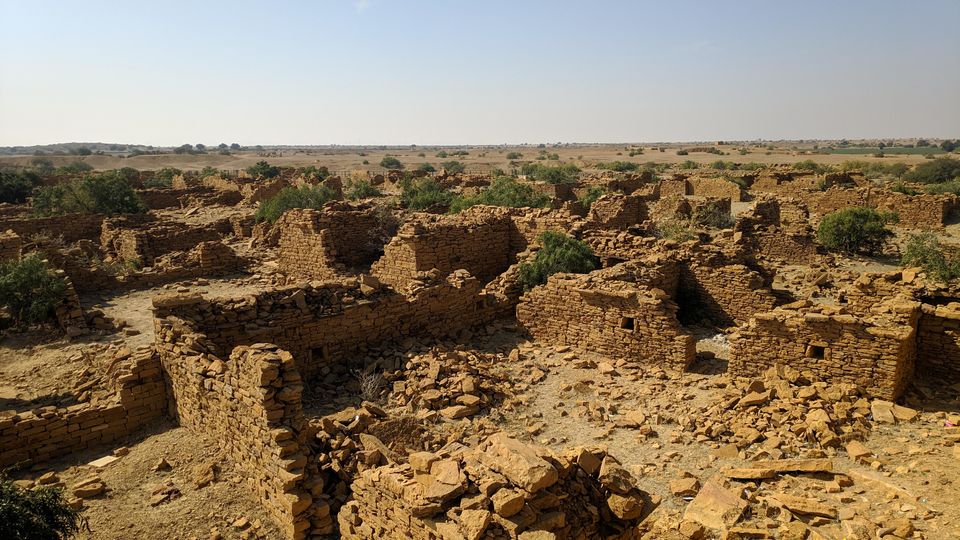
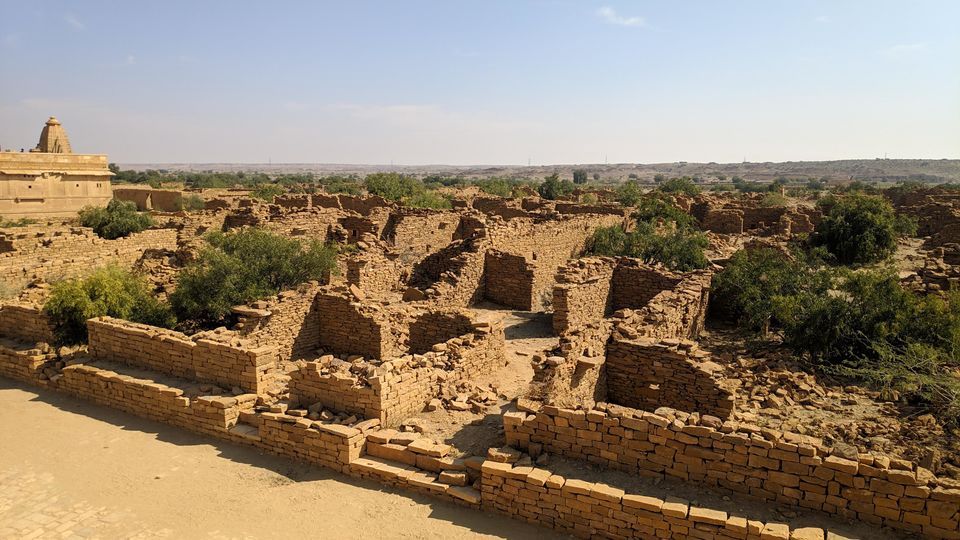
Aside the haunted stories of paranormal activity, Kuldhara showcases some amazing architecture. The entire village similar to the Jaisalmer city is carved out of yellow sandstone that glitters in the harsh daylight. The Paliwals had built a complex three tier system for water conservation & storage: First tier to store drinking water for human consumption, the second was used for bathing and utilities, and the third served as drinking water for cattle. The techniques used to harvest water back then have been inherited by farmers today and remain some of the cheapest and easiest techniques of desert farming even in the modern generation.
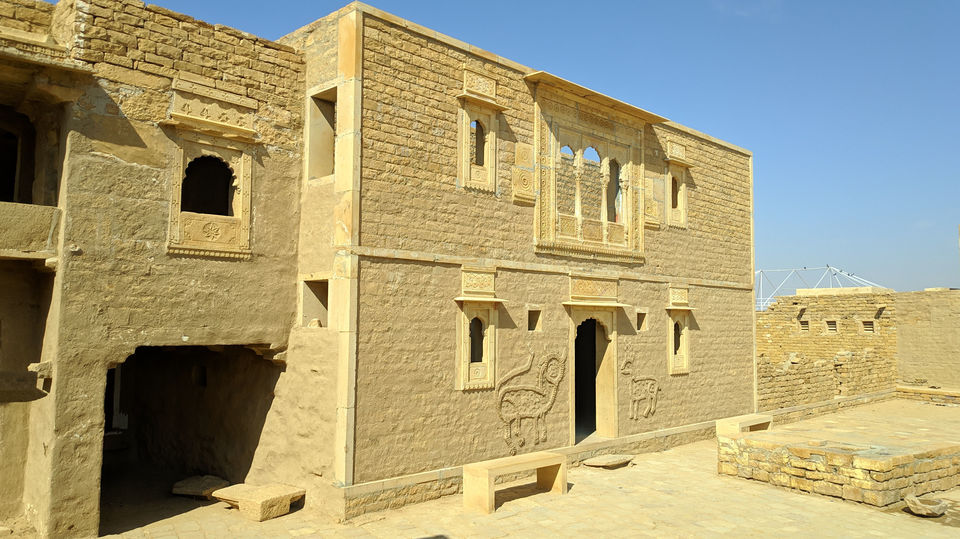
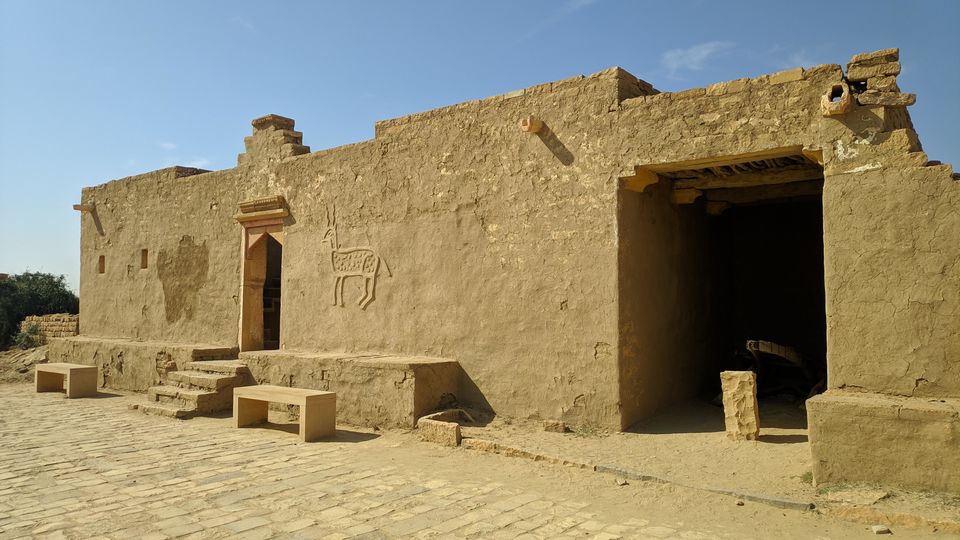
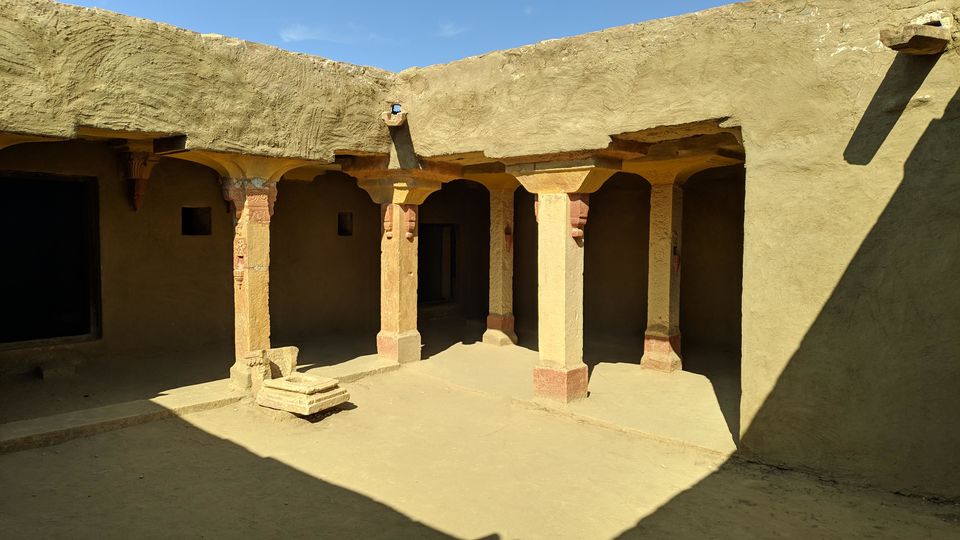
I spent around an hour inside the village. Although I was the only one when I had arrived, I was slowly accompanied by more tourists. As the sun assumed its peak position in the sky and the heat became unbearable, I decided to take a leave and continue on my journey back to the city.
As was the case with at Sam, I hadn’t booked my accommodation in Jaisalmer in advance. But unlike earlier, it took me barely 5min with all the booking apps my mobile phone was crammed with.
Accommodation: Hotel Desert Memories (INR 650 for one night)
The hotel was about a 10min walk from the fort. The old Jaisalmer city similar to Jodhpur is pretty small and concentrated around the fort, so most tourist attractions are always a walk away. There are a lot of resorts and guest houses, both budget and luxury, inside the fort. However, it’s not recommended to stay inside the fort. I had read article mentioning how the life inside the fort, increasing tourist inflow coupled with an ancient sewage system not designed for the purpose are pushing the fort towards implosion. The fort that has survived a millennium may not survive the next.
After relaxing at the hotel for a while, I headed towards the first tourist attraction for the day, Patwon ki Haveli. The Haveli actually comprises of five different havelis owned by five brothers and is the first haveli to be constructed in Jaisalmer. The haveli was built by a wealthy jewellary trader named Guman Chand Patwa in 1806, for his five sons. Patwa couldn’t see his wish complete within his lifetime as the construction of the haveli took more than 50 years to complete.
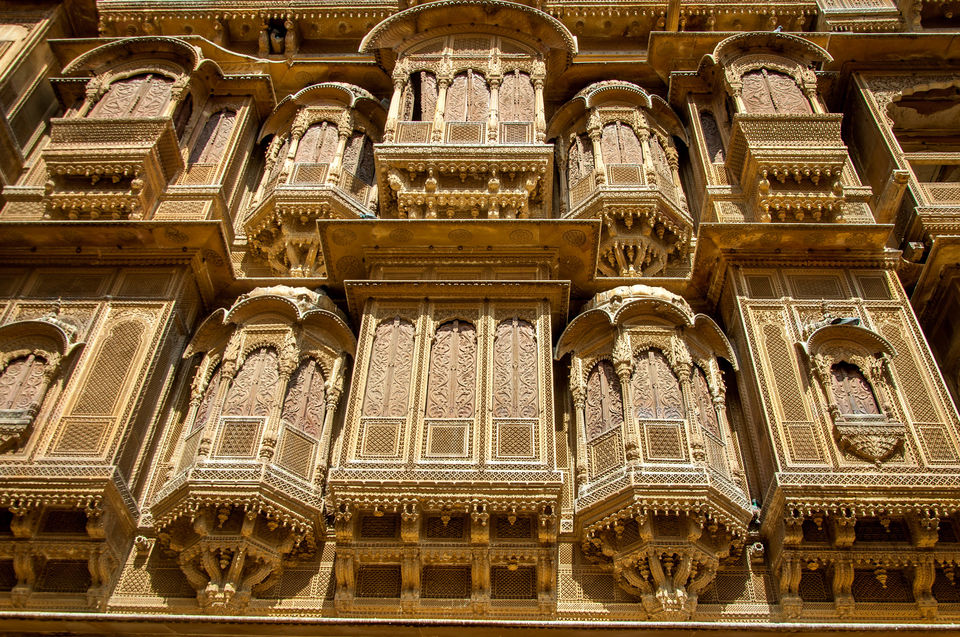
However, there are only two havelis out of the five that are open to public. One of them is managed by the Government and has been converted into a museum. The other one is privately owned by the Patwa family and is in its original untouched form and surprisingly well maintained. Both the havelis need an entry ticket of INR 100 each and the tickets are non-transferable.
Most tourists who visit the haveli are unaware of this and it ends up creating a confusion. Some of them even feel cheated, something I witnessed with a family when they were about to enter the second haveli. I was informed by the guide that the Patwa family still stays inside one of the other three havelis, one haveli although open to public is in a bad state and no one visits it while the last of the five is being restored by the Government.
I entered the Government managed haveli first. The architecture is dominated by splendid jharokas in a combination of India and Persian styles. One look at the haveli tells you a lot about the wealth amassed by the traders and merchants of that generation and their lavish living standards.
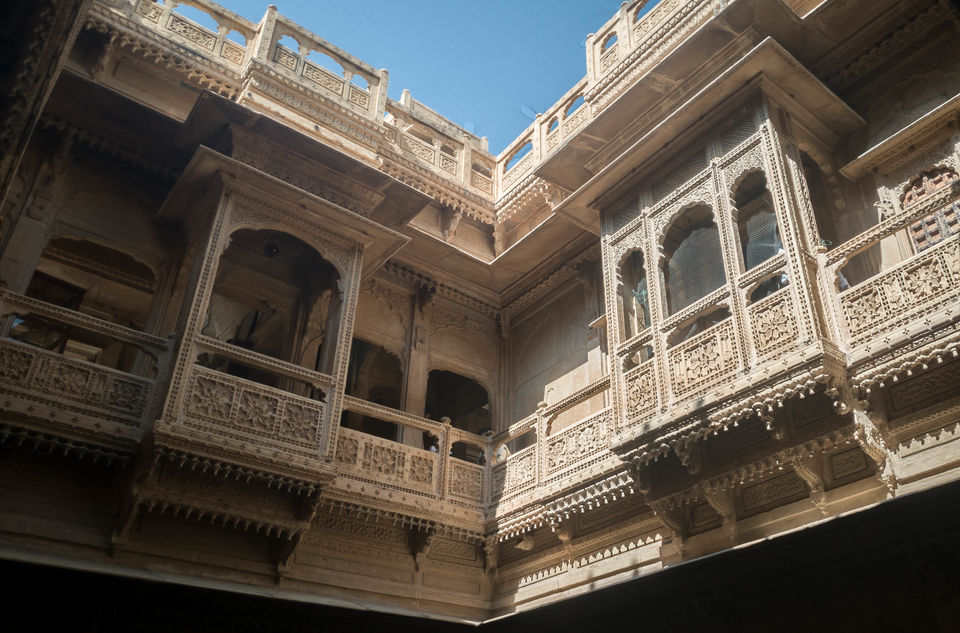
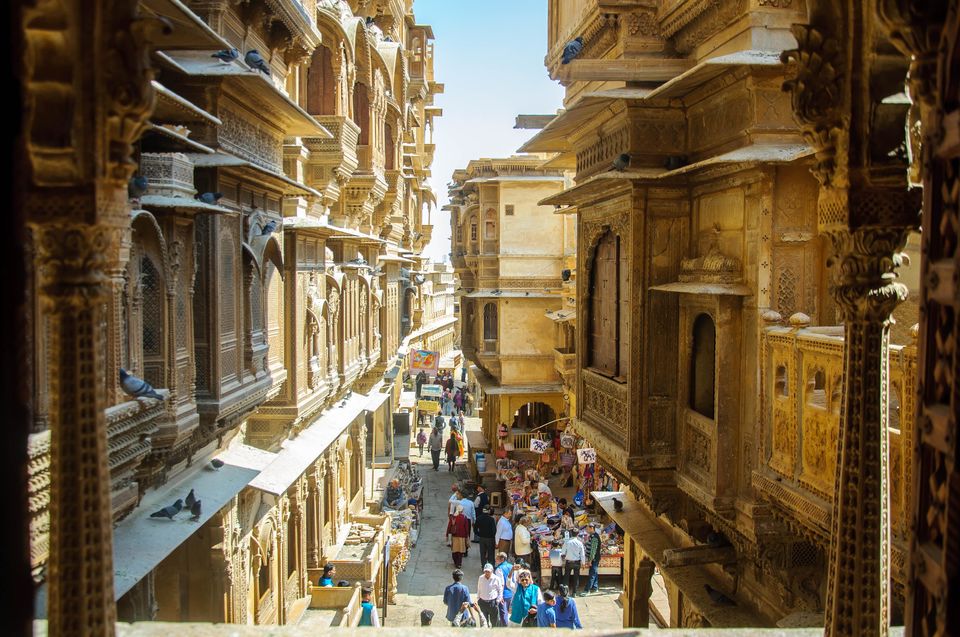
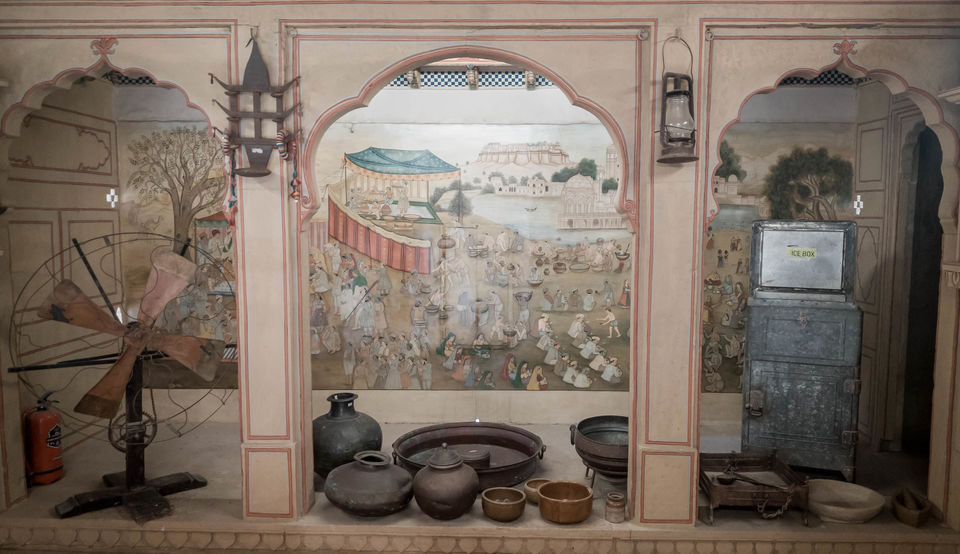
The family owned haveli offers a guide that is included in the ticket cost itself. I wasn’t aware of it as the guide followed me inside and informed me of that. In his words, he saw me enter alone and guessed I would need a guide, as others in groups always bring their own along. I was more fascinated by the second haveli as the interiors were completely untouched & authentic, rather than restored and reconstructed as was the case in the Government managed haveli museum.
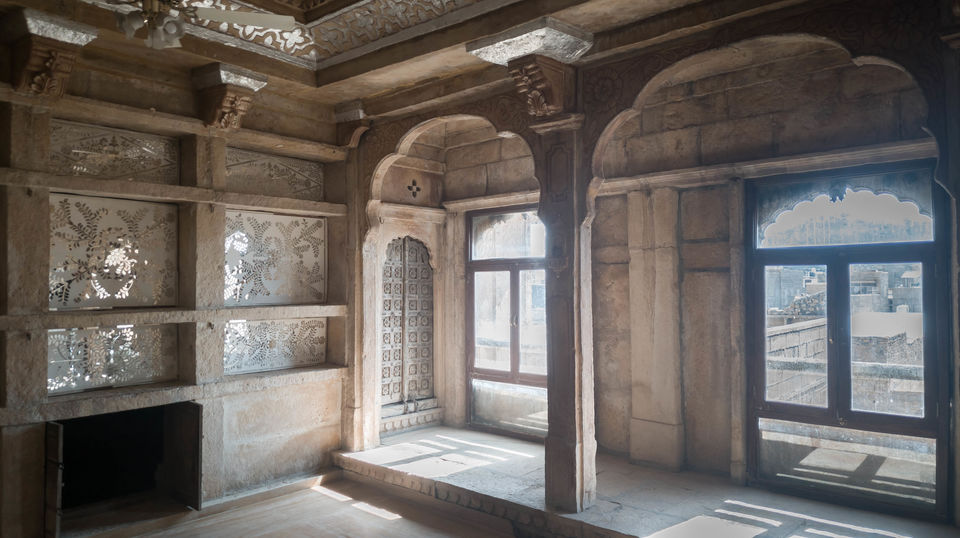

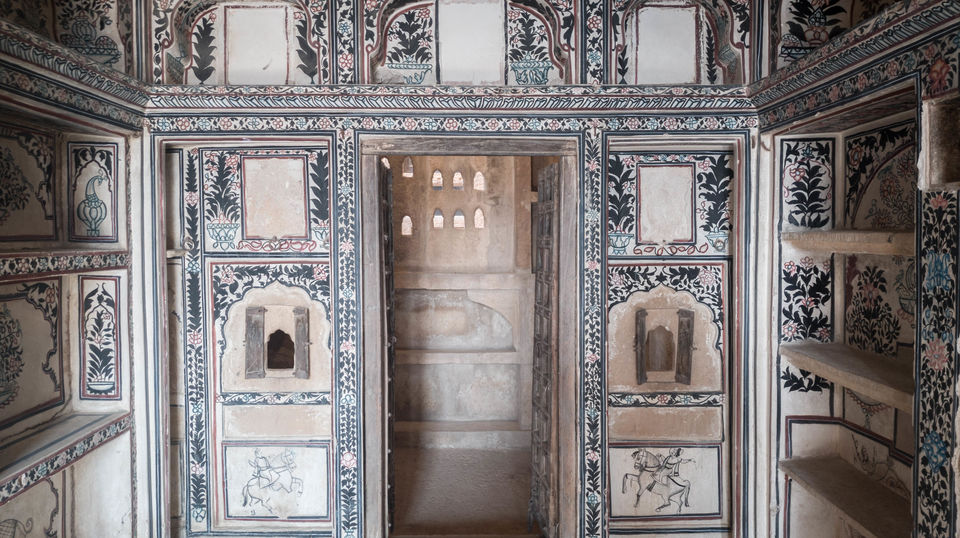
It was past 3pm when I walked out of the haveli and my stomach was craving for some food. I saw a hoarding of a certain Natraj restaurant outside the haveli and that’s where I directed my motorcycle. I opted for a Rajasthani thali and the food was delicious. More than the food, I loved the hospitality of the restaurant owner and I would definitely visit the place again when I come back to Jaisalmer in the future.
Post lunch, I finally decided to head to the Jaisalmer Fort and Palace. The fort is the only one in the world which continues to be inhabited and has a population of around 4000 people who are largely the descendants of the Daroga and Brahmin communities. The walls of the fort house a couple of attractions: The Royal Palace, Jain temples, Hindu temples, Merchant Havelis and four gateways.
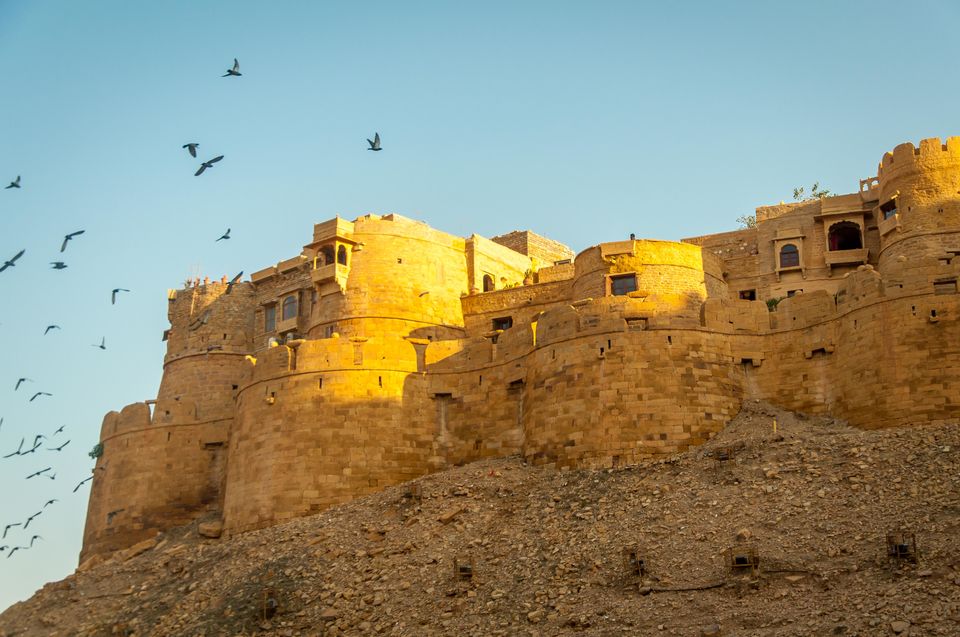

I first entered the Royal Palace, which although smaller compared to its counterparts in Jodhpur and Udaipur is very well maintained. There is an INR 100 entry ticket and audio guides are available. The palace being smaller also takes lesser time to explore and about an hour is enough. Aside the exceptional architecture, a major attraction inside the palace is the view of the city from the balconies of the fort.
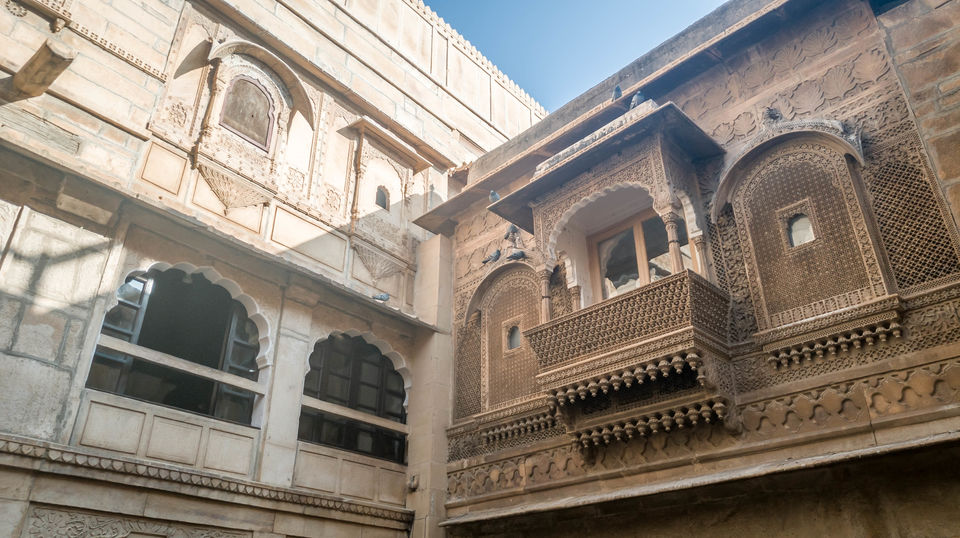
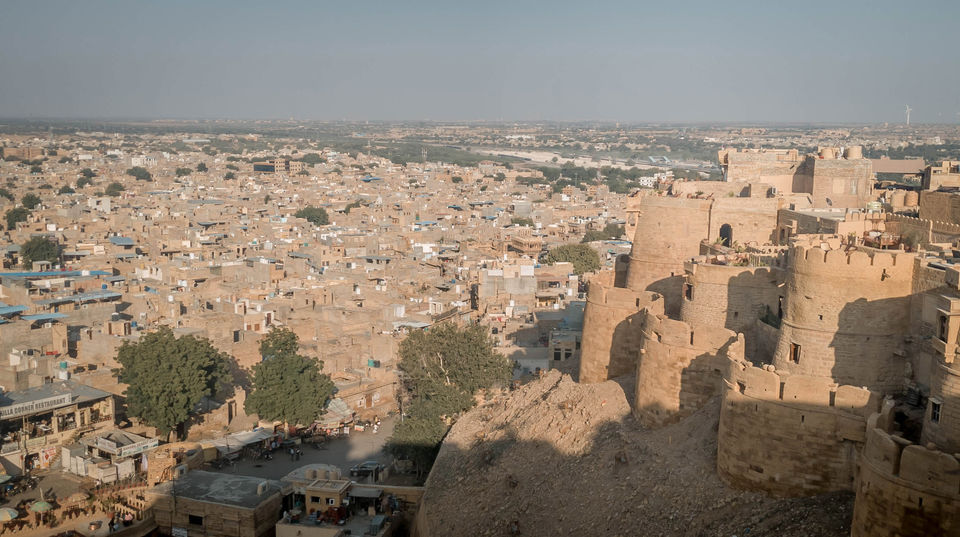
It was already evening by the time I finished the tour and decided to come back next morning to explore the rest of the fort complex. Next I headed towards the Gadisar Lake. The lake is situated on the outskirts of the city but only a km away from the Fort entrance. The artificial lake was built in 1367 by Maharawal Gadsi Singh to meet the water requirements of Jaisalmer and survived on rain water. The lake was a vital source of water for Jaisalmer until the late 20th century. Now, however it’s a popular tourist destination as the lake is open for boating.
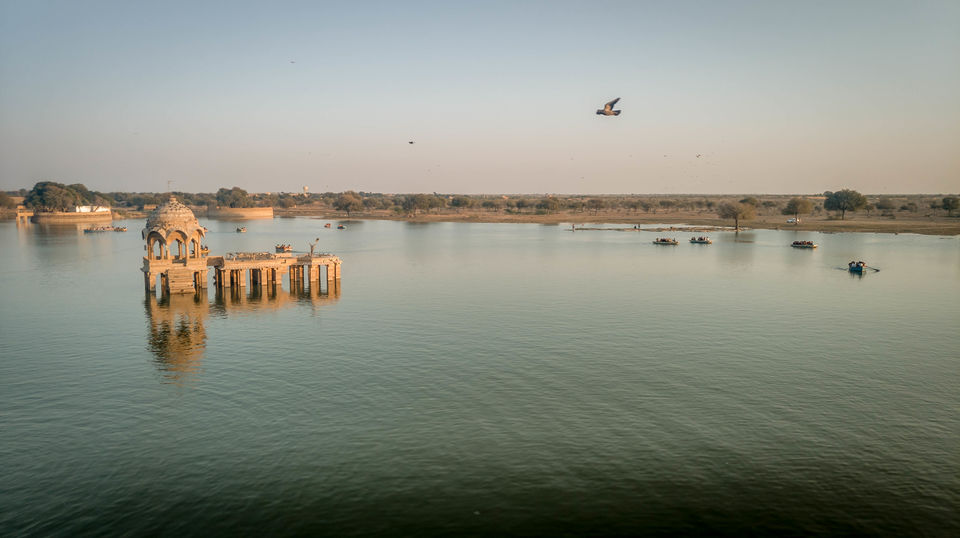
The 14th-century Tilon ki Pol which is the entrance to the Gadisar Lake is said to have been built by a prostitute. When she offered to pay to have it constructed, the maharaja refused permission as he would have to pass under it which would be beneath his dignity. While he was away, she built the gate adding a Krishna temple on top so the king could not tear it down.

Although the entrance is free, you need to pay for the boats. There are three types of boats: Row, Paddle and Shikara and the rates differ based on what you avail. Boating is open between 8am and 8pm. Aside boating, the lake has couple of temples and shrines and a desert cultural museum which could be visited. Due to its proximity to the Bharatpur Bird Sanctuary, it’s visited by a lot of migratory birds during winter.
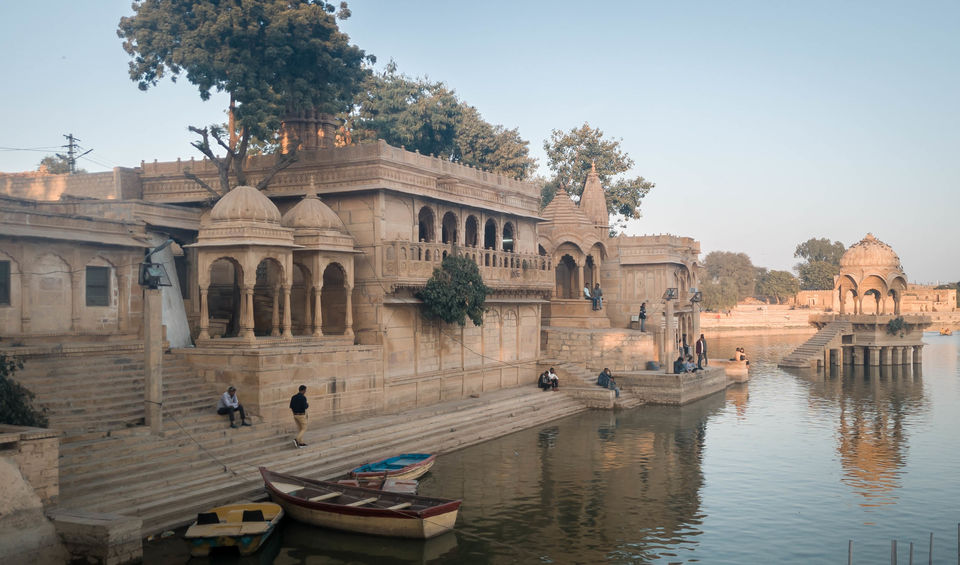
Even though the lake was crowded when I arrived, I managed to find to a peaceful spot away from the boating area on the other side of the lake. I sat there among others like me who just wanted to watch the beautiful sunset in isolation and serenity.
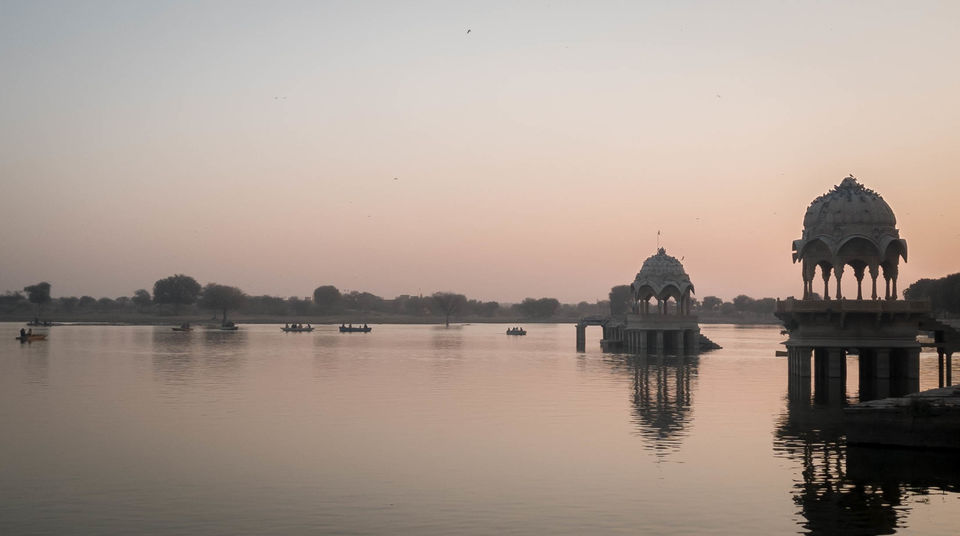
After sunset, I headed back to the hotel and only left my room briefly for dinner. A friend of mine was in the city, also on a tour of Rajasthan and I paid him a visit. He was staying in the Moustache hostel, whose location was absolutely brilliant as one could see the Fort directly from its premises and I wondered why the hell I didn’t book my accommodation there. Moreover, the fort is lit up at night similar to the Mehrangarh Fort in Jodhpur making me regret my decision even more.
Next morning, I woke up around 6am with a view to capture the Royal Cenotaphs at Bada Bagh under the golden rays of the morning sun. Bada Bagh is situated 5km away north of the city. There is a nominal INR 50 entry ticket and another INR 500 for the camera (if my memory serves me well). Obviously, I didn’t a penny for my DSLR or the GoPro. The rules with respect to charges for the camera in most tourist places in India seem archaic with our mobile phones now housing SLR quality cameras.
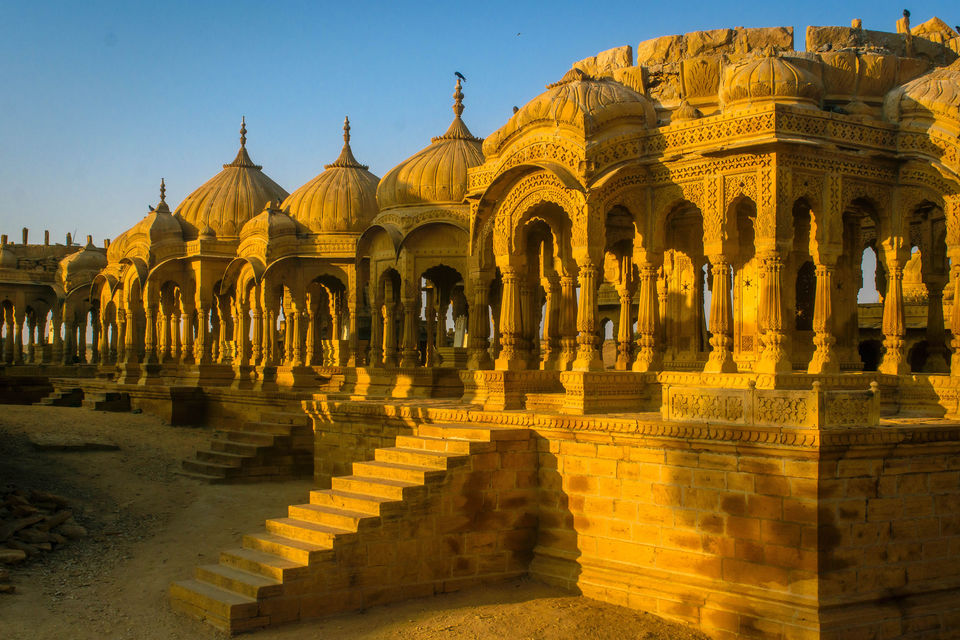
Bada Bagh has a series of cenotaphs of the Maharajas of Jaisalmer including Jai Singh II (1743) and the last one intended for Jawahar Singh which remained unfinished post our Independence. Jawahar Singh’s son ascended the throne after his death but he himself died within a year. This was considered as bad luck and no more cenotaphs were constructed henceforth.

Most of the cenotaphs had a single stone slab set in the middle with a carving depicting a man on horseback, representing the ruler for whom it was built. This was accompanied by carvings of women, which actually represented the ones who self-immolated by jumping into the burning pyre of the ruler as an act Sati. The cenotaphs were of various sizes, the more powerful and important ones represented by bigger cenotaphs.

There’s also a wind farm next to the complex. The garden had a spooky feeling to it similar to the one I got at Kuldhara, most likely due to the fact it’s not visited by a lot of tourists, although it’s very much worth it. I only had a guide to accompany me and I did feel pity for him wondering how much he would be earning considering the lack of tourists. I could be wrong as it was early morning and the place would see more tourists during the rest of the day. However, this is also the best time of the day for photography due to the softness of the light and also that you can avoid capturing the windmills in the background.
Next, I headed back to the Jaisalmer Fort. I had only visited the Palace the earlier day and wanted to explore the rest of the fort complex. After roaming around inside the narrow streets of the fort, I ended up at the Jain temples.


Within the fort walls are these astonishing seven temples built mainly during the 12th century. The temples are an architectural marvel and are dedicated to Jain Tirthankars (Hermits) and the seven are named as follows: Chandraprabhu, Rishabhdev, Parshwanath, Shitalnath, Sambhavnath, Shantinath and Kunthunath. Amongst these, the temple dedicated to Parshwanath Bhagwan who was the 23rd Tirthankara is the largest one.


‘Maharaja Jaisal who had founded Jaisalmer wasn’t a very wealthy man. The Jains who controlled the trade routes around Jaisalmer on the other hand were ultra-rich. The Patwa family was so rich, they had financed 48 kingdoms and had stores all over Asia. They made a deal with Maharaja Jaisal to build their temples inside the fort and help protect them against the invaders in exchange of helping him finance the fort. Since the fort was difficult to penetrate, almost a fortress, the temples have survived numerous invasions over the past 800 years and stand strong even today.’

The Jains were filthy rich and yet lived outside the fort. They built houses that were bigger and grander than the ones built by the Maharaja. Hence they were not allowed to live inside the fort, otherwise they would end up competing against the Palace. This is clearly visible when you visit the Patwon ki Haveli which is more glorious and larger than the Jaisalmer Palace inside the fort. Another logic was that by allowing the Jains to build their houses outside the fort, which was located on a hill, the Jains could have their homes larger in size without overshadowing the Palace.
The temples are open to tourists between 8am and 12pm. It’s best to visit as early as possible to avoid huge crowds. Mobile phones aren’t allowed inside the temples and need to be deposited outside. Either that or you could simply keep it inside any bag you carry with you and avoid using it unless you want to pay a fine. Photography is allowed and a separate ticket needs to be bought. The rules are strict when it comes to carrying a camera and it’s better you buy the ticket rather than trying to beat the rules.

After my visit to the temples, I again roamed around inside the fort before hunger took over. I had the most delicious breakfast from my entire trip which included piping hot ‘Paneer Parathas’ and ‘Masala Chai’. Later, I headed back to the hotel. I already had stayed well beyond the check-out time of 11pm and decided to take a leave before the authorities either kicked me out or charged me for an extra day.
That was the last of my time in Jaisalmer. I still regret I only spent 2 days in the beautiful city as it deserves more. Apart from all the attractions within the city, you can also visit the Longewala War Memorial and Tanot Mata Mandir, situated about 120km west of the city. You don’t need any permission to visit them, however would need a permit to visit the border beyond Longewala. The permit is available at the BSF headquarters in Jaisalmer but note most of the tourists don’t get one. A visit to Longewala needs another extra day. I would recommend staying 3 days in Jaisalmer, even 4 days or more if you want a special desert experience.

